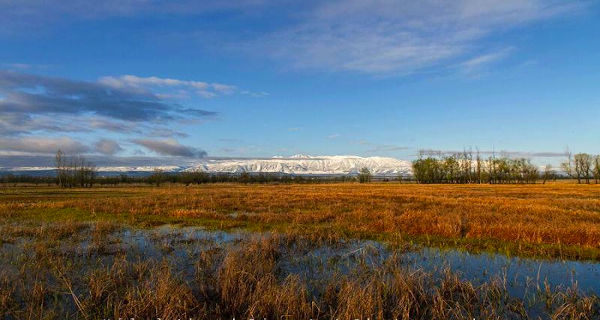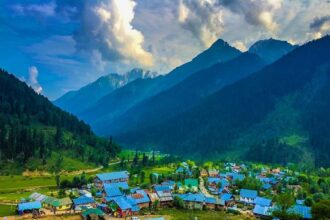Global Recognition and Ecological Significance
The Shallabugh Wetland Conservation Reserve represents a critical ecological treasure in Kashmir’s landscape. Spanning 1,675 hectares across Srinagar and Ganderbal districts, this remarkable ecosystem was elevated to international prominence upon receiving Ramsar site status on June 8, 2022. The wetland’s global recognition stems from its extraordinary biodiversity and complex ecological interactions.
Scientifically, the wetland functions as a sophisticated natural infrastructure, performing multiple critical environmental services. It acts as a natural water purification system, filtering sediments and pollutants while maintaining hydrological balance in the region. The ecosystem’s ability to absorb carbon dioxide and mitigate climate change effects makes it an invaluable environmental asset. Moreover, its intricate water management capabilities help prevent flooding and support groundwater recharge, demonstrating nature’s remarkable engineering capabilities.
Avian Diversity
The Shallabugh Wetland serves as a critical migratory corridor and wintering ground for hundreds of bird species, transforming the landscape into a living, breathing avian sanctuary. During peak migration seasons, the wetland hosts an astounding population of 300,000-400,000 birds, representing a complex ecological network of interdependent species.
Ornithologists have documented an impressive range of bird species, each playing a unique role in the ecosystem’s delicate balance. Rare and endangered species like the Pallas’s Fish-eagle find critical refuge here, while migratory birds such as Pintails, Common Teals, and Wigeons utilize the wetland as a crucial stopover. The presence of apex predators like Steppe Eagles and Eastern Imperial Eagles indicates a robust and healthy food chain, reflecting the ecosystem’s overall environmental health.
Conservation and Community Engagement
Local communities have emerged as primary stakeholders in the Shallabugh Wetland’s conservation narrative. Traditional ecological knowledge, combined with modern scientific approaches, has created a holistic conservation model. Villagers surrounding the wetland have transitioned from potential threats to active protectors, participating in monitoring, awareness programs, and sustainable livelihood initiatives.
The Wildlife Department has implemented comprehensive strategies involving community participation. Educational programs, awareness campaigns, and skill development workshops have empowered local residents to become environmental stewards. By providing alternative livelihood options and creating economic incentives for conservation, the department has successfully transformed potential ecological conflicts into collaborative preservation efforts.
Challenges and Future Prospects
Despite its ecological significance, the Shallabugh Wetland confronts multifaceted challenges that threaten its long-term sustainability. Urbanization pressures, increasing pollution levels, and climate change impacts pose significant risks to this delicate ecosystem. Siltation from nearby agricultural and urban areas gradually reduces the wetland’s water-holding capacity, necessitating urgent intervention.
Climate change introduces additional complexities, altering migration patterns and potentially disrupting the intricate biological rhythms that have evolved over centuries. Rising temperatures, unpredictable precipitation patterns, and extreme weather events could fundamentally transform the wetland’s ecological dynamics. Proactive, science-based management strategies are crucial to mitigate these potential disruptions.
Eco-Tourism Potential
The Shallabugh Wetland represents an extraordinary eco-tourism destination with immense potential for sustainable development. Its diverse landscape, comprising grasslands, woodlands, and wetland ecosystems, offers unparalleled opportunities for nature enthusiasts, researchers, and wildlife photographers.
Strategic infrastructure development, including well-designed observation points, interpretive centers, and carefully planned walking trails, could transform the wetland into a world-class ecological tourism site. By implementing responsible tourism practices that prioritize conservation over commercialization, the region can generate economic opportunities while preserving its pristine environmental heritage.
The annual bird census, conducted meticulously on February 23-24, provides critical scientific data for ongoing conservation efforts. This systematic monitoring helps researchers understand population dynamics, migration patterns, and potential environmental changes, ensuring the wetland’s continued protection and management.







